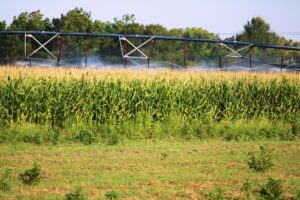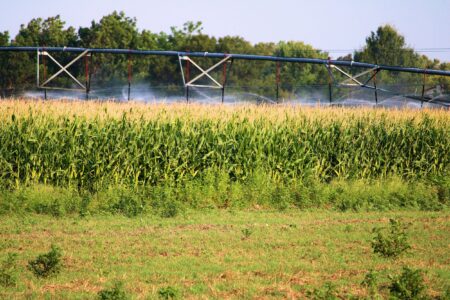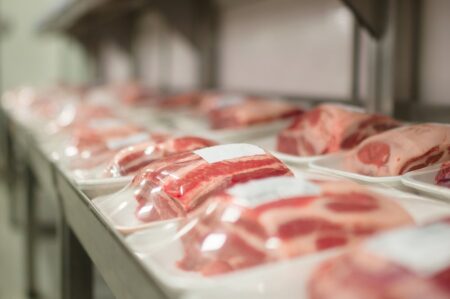By Carl Zulauf, Gary Schnitkey, Nick Paulson, and Joana Colussi
The implication of this set of four articles is that the U.S. grain and oilseed sector should focus less on South America and China (hereafter, SAC). This implication is consistent with the multivariable regression analysis in this article. It finds that production in excess of domestic consumption in SAC is not a statistically significant explanatory variable of the yearly variation in the U.S. composite grain–oilseed price. In contrast, production in excess of domestic consumption in the U.S. and rest-of-the-world (hereafter, ROW) are statistically significant. The implication is also consistent with the analysis of the three regions individually (see farmdoc daily of Aug. 22, 2025 (SAC), Aug. 27, 2025 (U.S.), and Sept. 3, 2025 (ROW)).
Data and Procedures
The data used in this analysis is from the Production, Supply, and Distribution Online (PSD) database (USDA, Foreign Agriculture Service). Domestic consumption is the quantity consumed by a country from domestic production and imports. The study starts with the 1981/1982 crop year (hereafter, first year is used). Several countries and crops were added to PSD during the 1970s. A 1981 starting point also postdates the 1970 crop prosperity period. Field crops in this study include feed grains (barley, corn, millet, oats, sorghum), food grains (rice, rye, wheat), and oilseeds (cottonseed, peanuts, rapeseed, soybeans, sunflowers). These 13 crops should be considered collectively since they compete for acres and are demand substitutes and complements. Since weight per unit differs by crop, the unit of measurement is metric ton.
A U.S. composite price for the grains and oilseeds in this study was constructed as follows. First, the U.S. average price of each grain and oilseed over the 1981–2024 market years was obtained from QuickStats (USDA, National Agricultural Statistics Service). Second, prices per bushel were converted to prices per pound using a crop’s standard pounds per bushel conversion factor. Third, each crop’s price per pound was weighted by the crop’s share of total U.S. grain and oilseed production for the year. Fourth, the weighted prices were summed across the crops. This sum is the U.S. composite grain-oilseed price for the market year.
Multivariable Regression Findings
Results of the multiple variable regression are in Table 1. Each regional variable has a negative sign. This was expected since a larger surplus of production over domestic consumption translates into more exports and stocks carried out of the year. The latter increases future supply, thus depressing prices. Year-to-year variation in the percent production surplus vs. domestic consumption for both the U.S. and ROW are significantly related with 99% statistical confidence to the year-to-year percent change in the U.S. composite grain-oilseed price. In contrast, yearly variation in the SAC’s production surplus/deficit has a statistical confidence of 87%, which is below 90%, the lowest commonly-used value to determine statistical significance.
farmdoc
Percent change in U.S. composite grain-oilseed price for a 1% change in production relative to domestic consumption is four times larger for ROW than for the U.S. (-3.60 vs. -0.84). In assessing relative importance of these two variables, it is important to also consider that the U.S. ratio varies more than the ROW ratio. Standard deviation of the production-to-domestic consumption ratio is seven times larger for the U.S. (14%) than for ROW (2%). It is thus not clear which explanatory variable is more important.
Collective explanatory power of the three variables is 48%. This is considered high when a percent change variable is being explained. However, another interpretation is that other variables explain half of the yearly variation in percent change of the U.S. composite grain-oilseed price.
Confidence is low (37%) that the intercept coefficient differs significantly from zero. No change is thus expected in the U.S. composite grain-oilseed price when the production surplus/deficit of the three regions is taken into account. This finding is common for price change variables once significant explanatory variables are considered. For further discussion of the regression analysis, see the data note.
Discussion
Overall conclusion from this set of four articles is that the U.S. grain and oilseed sector should focus more on the rest of the world than on South America and China.
Both (1) the ratio of U.S. production to domestic consumption of grains and oilseeds and (2) the ratio of production to domestic consumption in the rest of the world excluding China, South America, and the U.S. are statistically significant explanatory variables of the year-to year percent change in the U.S. composite grain-oilseed price. In contrast, this production-consumption ratio for SAC is not statistically significant.
As discussed in the Aug. 22, 2025, Farmdoc Daily, since 1980 the large increase in China’s excess consumption over its production of grains and oilseeds has nearly offset the large increase in South America’s excess production over its consumption of grains and oilseeds. In net, little change has occurred in the combined SAC grain-oilseed consumption-supply relationship since 1980.
Even if current U.S. geopolitical policy was not solidifying the SAC grain-oilseed connection, South America would likely have displaced the U.S. as China’s preferred grain-oilseed supplier. South America’s grain-oilseed production window is opposite China’s and the U.S.’s northern hemisphere production window. Sourcing from South America instead of the U.S. thus spreads out demands on China’s grain-oilseed storage and supply chain infrastructure while allowing it to obtain supplies at a second harvest price low. It is important to remember that, by calendar year 2017, the year before initial implementation of tariffs by President Trump (Farmdoc Daily, July 31, 2018), China was already sourcing 63% of its soybean imports from South America according to China’s custom data.
Shifting U.S. grain-oilseed exports from China to the rest of the world will differentially impact U.S. production regions if transportation costs differ from those to China. And, the increasingly close tie between China and South America will become worrisome if SAC’s combined grain-oilseed production surplus starts to grow year over year unlike the limited change during the last 45 years.
Data Note
Statistical significance is the same when each region is a single stand-alone explanatory variable. Moreover, sum of their individual explanatory power (50%: 5% (SAC) + 29% (U.S.) + 16% (ROW)) is similar to the multiple variable regression’s explanatory power (48%). The similar explanatory power is due to a near zero correlation of the region’s production vs. domestic consumption over time (0.08 for SAC and U.S., 0.11 for SAC and ROW, and -0.02 for U.S. and ROW). Near zero correlations are not a surprise since weather is a key determinate of production. From a statistical perspective, the three explanatory variables are largely independent of each other.
Grains and Oilseeds: Part 4 — Summary and Implications was originally published by Farmdoc.


:max_bytes(150000):strip_icc()/Updated3BigThings-3-soybean-harvest-yellow-1-13b4e68e77bc41d8bd69b3b910ff5300.jpeg)

:max_bytes(150000):strip_icc()/cerealryecovercropsUSDA-b131fd0b2c584da7a22485faa6f182c6.jpg)


:max_bytes(150000):strip_icc()/GrainBinExpansion-10_farm_grain_bin_silo-6e1829183acc433984613d940050d12e.jpg)


:max_bytes(150000):strip_icc()/100441307_dairy_cow-2b8693c4806c45a1aa0e89b45bf0ab00.jpg)
:max_bytes(150000):strip_icc()/WhiteHouse-2000-251df9c5b90d4c7da5a9226a5c8f9dac.jpg)